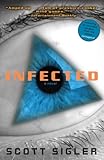Getting back into traditional fantasy MMOs has of course led me to thinking about their flaws and my desire to correct them.
One of the long standing issues with the genre since EverQuest is the holy trinity of design: damage taking, damage prevention/recovery, damage dealing. Â And while games continue to try to include crafting and other non-combat elements, the vast majority of people actually want to kill things, so combat remains, and will remain, at the center of most game design. Â In this trinity mold, you end up with a tank, a healer, and then assorted damage dealing classes. Â Fighting runs the same, tank taunts to control where the damage goes, the healer heals the tank, and everyone else tries their best to make the tank’s job very very difficult.
Right now, tanking is all about hitting taunt abilities to focus the attention of the target on to the player and keep its damage output in one place where it can be measurably tracked and dealt with. Â As games have advanced over the years, taunt abilities have become more varied and interesting, but at their base they are about manipulation of the aggro list (the priority in which an NPC “hates” players) to put the tank at the top.
What I’m considering, and by no means is this a finished idea, but one that needs discussion, so please, discuss, is to replace taunt with a cover system. Â If Monster A is attacking Player B, rather than having Tank X target Monster A and click a taunt ability, saying “Hey stupid! Come get me!” (which always just seemed idiotic to me, from the stance of someone who enjoys role playing in games), you instead have Tank X target (or secondary target, or target of target, or whatever) Player B and click one of his new protection abilities, putting himself between Monster A and Player B and taking the damage.
This appeals most to me because it eliminates taunt, which from a role play and logic standpoint has always been broken.  Why would a monster ever stop beating on the healer just because the invulnerable turtle is calling him names?  Nope.  Healers first, then those pesky damage dealing people who are killing me and lastly I’ll deal with the invulnerable turtle when he’s a little less invulnerable.  On the other hand, the idea of a monster going after the healer and the invulnerable turtle stepping in between them, now that has merit.  Effectively, we are taking away the roll of tank as we know it, and turning him into a healer type who utilizes shield/rune spells, preventing damage but not recovering it.
The main downside I see with this is the creation of the new role of DPS Tank. Â That’s where the player with the highest DPS becomes the defacto tank by virtue of doing the most damage while the healer heals him and the old tank protects him.
Thoughts?
As an aside, this is ironic because over at Big Bear Butt, he recently posted about giving everyone taunt and eliminating healing. Â Which just goes to show that this is a problem with many solutions.
 I’m going to start the review of Scott Sigler’s
I’m going to start the review of Scott Sigler’s